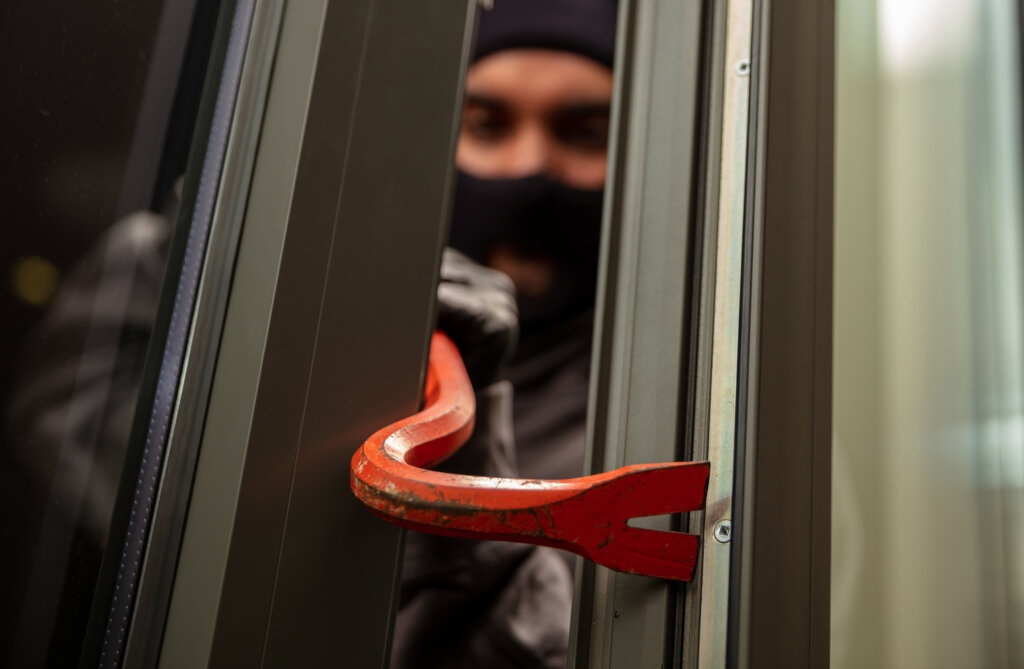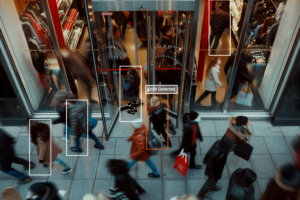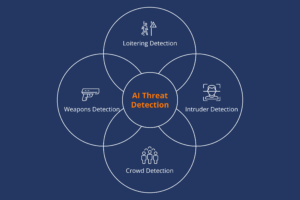Weapons Detection Technology: Beyond Guns and Firearms

AI-powered weapon detection software is rapidly reshaping the way security teams protect public spaces. With artificial intelligence (AI), modern surveillance systems can detect guns and help stop potential threats.
But that’s only part of the solution.
Today’s threats are more complex, fast-moving, and diverse. From schools and airports to transit systems and stadiums, public safety depends on smarter, more adaptive tools.
Metal detectors and human monitoring can’t always catch these threats in time.
AI can—and it’s evolving fast.
This article explores how AI weapons detection systems are advancing. We’ll look at why broader detection matters, how it works, and what’s next.
Why Gun Detection Alone is No Longer Enough
AI-powered gun detection technologies play an important role in modern surveillance. But violence is evolving. And so are the weapons used to carry it out.
In 2019, 25% of U.S. homicides were due to non-firearm weapons. These included knives, blunt objects, and even fists. In England and Wales, a 2008 study found that sharp objects caused 29% of murders. Firearms? Just 9%.
Even in healthcare settings, weapons like knives appear far more frequently than guns. One study found knives in 3.8% of cases, but guns in only 0.1%.
Gunshot detection, like ShotSpotter, has also come under fire. A 17-year analysis showed it had no major impact on gun-related arrests or homicides.
Metal detectors, often used to prevent mass shootings, have shown mixed results in both schools and public venues. To close these gaps, threat detection must cover more than firearms. AI weapons detection systems need to recognize diverse threats—before violence occurs, not after the fact. The future of public safety depends on it.
Types of Threats AI Can Detect Beyond Guns
Firearm detection is the most established form of AI-based weapon detection. And solutions like Actuate’s offer 99% accuracy.
But as public threats diversify, so must the tools designed to stop them.
Recent advances in weapons detection technology have shown strong potential for identifying other types of weapons, such as:
- Bladed weapons and sharp objects
- Blunt force objects
- Improvised and concealed weapons
- Suspicious items and potential explosives
AI models like YOLOv8 and orientation-aware CNNs have shown promising results. These systems use machine learning to analyze video in real time. They identify weapons and flag objects based on movement, shape, and context.
Still, challenges remain. It’s harder for AI models to detect concealed weapons—especially in complex environments. That’s why research continues to push detection accuracy forward.
But weapons aren’t the only threats AI can identify.
Intruder Detection
AI-driven intruder detection flags unauthorized access in real time—without relying on facial recognition. Unlike traditional systems, it detects behaviors, not identities, reducing bias and increasing accuracy. This form of threat detection software typically works with existing cameras. It identifies both human and vehicle intrusions, drastically reducing false positive rates by 95%.
Loitering Detection
Loitering can deter customers, disrupt operations, and signal intent for theft or violence. Loitering detection software monitors for individuals or vehicles lingering in sensitive areas. The system distinguishes between typical and suspicious patterns—alerting staff only when it matters.
Crowd Detection and Movement Monitoring
Crowd detection is a type of AI-based threat detection that helps manage density, flow, and safety in real time. Various industries use it to monitor occupancy, detect sudden surges, and prevent bottlenecks.
Fire and Smoke Detection
Fire spreads fast, but traditional alarms often react too late. AI-based fire detection software spots smoke or flame instantly—across indoor and outdoor environments. As one of Actuate’s beta products, it adds a crucial layer to emergency response.
Together, these tools form a multi-layered AI surveillance system. This integrated approach is what makes AI-powered security far more effective than traditional tools alone.
It’s the future of public safety—adaptive, intelligent, and ready for what’s next.
How AI Weapons Detection Systems Work
AI-powered weapon detection software relies on a combination of real-time video analysis, deep learning, and object recognition. These technologies allow security systems to identify potential threats as they unfold—without relying on manual monitoring alone.
Here’s how it typically works:
- The process starts with your existing CCTV security cameras. Video feeds are streamed into AI models. These systems are trained to recognize weapons and behavioral anomalies.
- These systems analyze each frame in milliseconds, detecting objects and flagging threats immediately. This reduces response time and cuts down on false positives by evaluating context, not just shape or movement.
- At the core are deep learning models like CNN-based architectures. These models are trained on thousands of images featuring firearms, knives, blunt objects, and improvised tools.
- Advanced platforms use orientation-aware bounding boxes to detect partially obscured or angled objects. This helps recognize concealed weapons in dynamic, crowded spaces.
- Once a threat is detected, the system sends an instant alert. Law enforcement and security teams can then act fast and confidently.
Most modern AI solutions—like Actuate’s—are designed to run on your existing infrastructure. There’s no need to install new cameras. Organizations can further bolster their weapon detection systems with other tools like loitering, intrusion, or crowd detection.
The result? A smarter, faster, and more scalable way to detect weapons and reduce risks.
6 Real-World Benefits of AI-Driven Weapon Detection
AI weapons detection technology offers more than faster alerts—it improves security outcomes at every level. Here are six key advantages:
1. Rapid Threat Response
AI systems analyze video in real time and send alerts within seconds. Faster detection gives teams the chance to act before gun violence or other potential threats materialize.
2. Fewer False Positives
Contextual analysis and continuous learning help AI models distinguish between threats and harmless behavior. This reduces alert fatigue and increases trust in the system.
3. Lower Operational Burden
Security teams no longer need to monitor dozens of feeds manually. AI-powered weapon detection software flags only what matters, allowing teams to focus on response.
4. Increased Public Safety
By spotting threats early, AI can help prevent incidents like mass shootings in schools, transit hubs, and public venues.
5. Works with Existing Infrastructure
Most AI-powered weapon detection software solutions run on current CCTV networks. No expensive new hardware required. Upgrades are therefore faster and more cost-effective.
6. Cost Savings Over Time
Reducing the need for manual monitoring, lowering false alarms, and minimizing hardware investments? These all lead to measurable cost savings over time.
Why Broader Threat Detection Matters
Weapons are a serious risk. But they’re only part of the bigger picture.
Many threats emerge before a weapon is ever visible. Suspicious behavior, restricted access breaches, crowd surges, or loitering can all signal intent. Detecting these early gives security teams more time to respond—and more context to act wisely.
That’s why surveillance systems must go beyond object recognition.
Tools like intruder detection, loitering alerts, and crowd monitoring help identify threats before they escalate. Combined with weapon detection, they form a complete picture of situational risk.
Together, these capabilities create a holistic surveillance setup where physical threats and behavioral anomalies are detected in sync.
This integrated approach is essential for keeping pace with modern security challenges.
Beyond Weapon Detection: Smarter Surveillance Starts Here
Firearm detection has come a long way. But it’s only the beginning.
As threats grow more complex, security must evolve. AI-powered weapon detection software offers real-time insights, broader threat recognition, and faster response.
All while working with the infrastructure you already have.
But true protection means looking beyond weapons alone. Intrusions, loitering, crowd anomalies, and environmental risks often signal danger before violence starts.
When these layers work together, AI becomes a force multiplier for public safety.
Organizations that embrace this shift now will be better equipped to prevent incidents and adapt to what comes next.
Ready to strengthen your security setup?
Explore Actuate’s AI surveillance solutions or book a demo to see how AI can transform your existing system.





